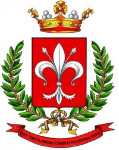Piazza Matteotti
Ultimo aggiornamento: 18 ottobre 2023, 13:09
Argomenti :
Tempo libero
Turismo
Piazza Matteotti
Denominata anticamente Piazza San Valentino o Piazza del Mercato, divenne Piazza Nazionale dopo la presa di Roma del 20 settembre 1870, che decretò la fine dello Stato Pontificio; successivamente fu Piazza Umberto I, in seguito all'assassinio del Re d'Italia nel 1900.
Nel 1922, il Comune di Ferentino commissionò il Monumento ai Caduti della Prima Guerra Mondiale al concittadino Luigi Morosini, stabilendo che il luogo di edificazione avrebbe dovuto essere il centro della piazza principale, in modo da garantire visibilità e dignità simbolica al monumento. La Vittoria alata con corona d'alloro glorifica il sacrificio degli oltre 200 ferentinati morti nel conflitto che vide l'Italia vittoriosa contro l'Impero Austro Ungarico.
Monumenti simili sorsero in ogni città a partire dal 1919, sia per placare l’angoscia dei superstiti a questa prima spaventosa guerra di massa, sia perché la vittoria nel conflitto doveva essere utilizzata per creare un senso comune di Nazione che ancora mancava - da qui la nascita del culto del Milite Ignoto, a rappresentare il sacrificio degli italiani tutti, uniti sotto una sola bandiera.
Il basamento in travertino, recintato e sopraelevato rispetto al piano della piazza per la sua sacralità, si presenta diviso in tre sezioni: base ottagonale, struttura a croce greca contenente la dedica ai Caduti e piedistallo ottagonale.
Il fusto presenta un decoro a bassorilievo con fasci littori, antico simbolo di giustizia Etrusco e poi Romano: il fascio, portato materialmente dai littori che scortavano i magistrati, veniva sciolto per prelevare le verghe in caso di pene minori, oppure la scure per la pena capitale.
La solidità di questa struttura e della memoria di cui si fa carico, fece sì che il Monumento fosse l'unica opera a rimanere in piedi dopo i bombardamenti del Maggio 1944, che rasero al suolo la piazza e tre quarti della città.
Con questo monumento i Cittadini di Ferentino rendono perpetuo onore ai caduti ed alle loro famiglie. Legando i fili del ricordo intorno alla colonna della Vittoria alata la Città svolge cerimonie annuali in memoria di un conflitto che ha lasciato profonde ferite.
ENG Previously called Piazza San Valentino or Piazza del Mercato, it became Piazza Nazionale after the capture of Rome on September 20, 1870, which decreed the end of the Papal States; later also Piazza Umberto I, after the assassination of the King of Italy in 1900.
In 1922 the Monument to the Fallen of the First World War was erected, based on a project by Luigi Morosini: a winged Victory with a laurel wreath glorifies the sacrifice of more then 200 citizens of Ferentino who died in the conflict that saw Italy victorious against the Austro Hungarian Empire.
Similar monuments arose in every italian city starting from 1919, both to appease the anguish of the survivors of this first scary mass war, and because victory in the conflict had to be used to create a common sense of nation that was still missing — hence the invention of the cult of the Unknown Soldier, to represent the sacrifice of all Italians, united under a single flag.
Similar monuments arose in every italian city starting from 1919, both to appease the anguish of the survivors of this first scary mass war, and because victory in the conflict had to be used to create a common sense of nation that was still missing — hence the invention of the cult of the Unknown Soldier, to represent the sacrifice of all Italians, united under a single flag.
The travertine pedestal is enclosed by an iron fence and raised above the level of the square due to its sacredness. It features an octagonal base, a second floor in the shape of a Greek cross (containing the dedication to the Fallen) and again an octagonal pedestal.
The bas-relief decoration shows fasci littori (lett. Lictor’s bundles), following the neoclassical taste of the time. They are an ancient Etruscan and then Roman symbol of justice: those bundles were physically carried by the lictors, who escorted the magistrates. The bundle was untied to pull out wooden rods in case of minor punishments, or the axe for capital punishment.
The solidity of this structure and the steadiness of the memory it bears ensured that the Monument was the only symbol standing unscathed in the flurry of bombings of May 1944, which razed the square and three-quarters of the city to the ground.
The City of Ferentino pays perpetual homage to the fallen and their families, binding the threads of remembrance around the column upon wich the winged Victory stands still, through yearly ceremonies.
